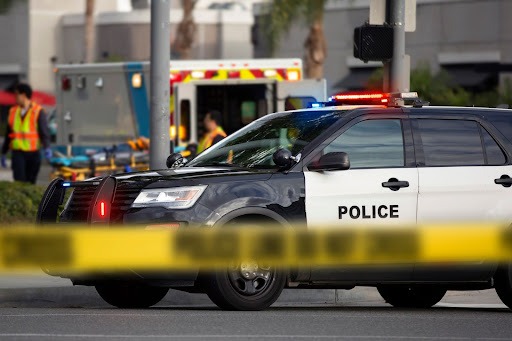On Tuesday May 24th, 2022, the country was shaken by the news of yet another school shooting. This time the shooting was at an elementary school in Uvalde, Texas and 19 children, and 2 teachers were killed. Making it one of the deadliest school shootings in United States history. As of now, we know that an 18-year-old boy used an AR-15 style firearm and opened fire on a classroom of fourth graders after shooting his grandmother and crashing his truck into the school. The gunman was shot and killed by law enforcement officers once they were able to make their way into the fourth-grade classroom. There have been over 200 mass shootings in the United States since January 1, 2022. This has massive consequences, not just for the victims of the mass shooting and the direct family and friends of lost loved ones but also the community, and people consuming this information through the news and social media. These events often lead to collective thoughts on the fragility of the human experience, the unknown variables of the world, feelings that the world is unsafe, and an experience that our brains can’t even conceptualize, death. As our social media feeds and news screens start to fill up with stories and photos of those whose lives were lost, we will inevitably think of our own fears, our own vulnerabilities, and our own losses.
What is a Traumatic Event?
According to the DSM 5, a traumatic event is “Exposure to actual or threatened death, serious injury, or sexual violence.” As mass shootings become more and more frequent in our society, we as a collective are each experiencing exposure to an actual or perceived threat of death and serious injury. Traumatic experiences can lead to symptoms of Post-Traumatic Stress disorder. However, it is important to keep in mind that experiencing a perceived or actual traumatic event does not automatically cause PTSD. Every person and every brain are different. One student directly in the line of fire who survived a mass shooting may develop symptoms of PTSD, such as flashbacks, and hypervigilance, while another student in the same line of fire may not, just as a consumer of the news may develop hypervigilance, fear that the world is unsafe, fear of leaving the house, while another may not. Experiencing a traumatic incident does not guarantee that there will be residual effects. All these experiences are true, authentic, and valid. Our brains and bodies react in different ways to stimuli depending on many factors including, resiliency, epigenetics, familial history of mental illness, coping skills, etc. According to the National Institute of Health 3.6% of adults 18 years and older have had PTSD in the last year with females being impacted by 5.2% and males being impacted at 1.8%. Personal events impact us individually as do large scale nationwide events.
How do we begin to process and move forward?
1. Take Action
One of the greatest indicators of resilience after loss is taking action and having a tradition. How can you honor the lives lost? How can you honor this shift in your own experience and perception of the world? Perhaps it is writing to government leaders or joining grassroots movements to meet like minded people and create movements towards change. Perhaps it is writing to the families who lost a loved one. Perhaps it is creating art, music or even a blog. Our brains like to act. When we act, we feel some semblance of safety and control in situations where we often have none. How can you honor and sit with your emotions and the consequences of this massacre while also creating a sense of meaning, purpose, and safety for yourself?
2. Turn Off and Tune Into Yourself
As we begin to have access to more and more data about traumatic events it is important to remember to eventually turn off. While it may be enticing to dive into the stories of the victims and their families it can and will begin to bog you down over time. Grief, sadness, frustration, anger, and more are all a given when it comes to traumatic events impacting us or our community. We often gather information about the perpetrator, the victims, the victims’ families, policy, and more to help make sense of things. Unfortunately, no matter the amount of information that we are given, we cannot make sense out of heinous acts. We cannot use logic to sort out an illogical action or event. Remember to take a step back. Set aside time to focus inward. Practice mindfulness, meditation, or yoga. If you are angry, move your body to release the pent-up emotion. Watch a movie, create art, play an instrument, etc.
3. Do Things to Activate Your Parasympathetic Nervous System
When we are in situations where there is a real or perceived threat the sympathetic nervous system activates, and the fight or flight response is mobilized. This causes the body to tense up, the heart rate to increase, airways to constrict, pupils to dilate, stomach movements to decrease, the digestive tract to slow, and the need to use the bathroom to decrease. This process allows the body to be fully focused on protecting itself to sustain life. The Parasympathetic nervous system is what kicks in when the body is no longer under real or perceived threat. When the parasympathetic nervous system is activated, we begin to rest and digest. Muscles start to relax, saliva production starts to increase, pupils return to their normal size, and heart rate decreases. Here are some actions that can be taken to stimulate the parasympathetic nervous system response:
1) Mindfully eat hard candy or chew gum. This will help to stimulate saliva production which will allow the Parasympathetic nervous system to start working.
2) Practice breathwork to slow down breathing. Breathe in for four counts, hold for four counts and breathe out for four counts.
3) Slow down your heart rate with relaxation and meditation.
4) Humm or sing! Humming creates vibrations that impact the vagus nerve which will stimulate the relaxation response. Singing will impact the vagus nerve and slow your breath.
4. Check In With Yourself
When grief hits and we begin to focus on things that we do not know or do not understand, change your focus to a state that you do know. This helps to calm the nervous system.
1) Check for injury: What is the most painful part of my grief right now? What needs tending to?
2) Adjust expectations of yourself. What am I capable of right now? Is there anything I need help or support with? Is there anything I can take off my plate until a less stressful time?
3) Identify your needs and work to meet them. Have I gotten enough sleep? Have I fed my body nutritious food? Am I using food to avoid difficult feelings? What do I need most at this moment?
5. Validate Yourself
When traumatic events happen to us, our loved ones or in our community, it is a stressful time. It is sad. It makes sense to feel angry or confused. It makes sense to not be working or achieving at your normal capacity. It is okay to need more sleep and more support. It is okay to cry. Hold space for the big feelings that come with big events. It is the only way to move forward with your grief.

6. Seek Help
If you or someone you know is struggling with returning to a sense of normalcy after a traumatic event, please call Serenity Trauma Healing Center. Some events we can experience, process, and move forward with amazing ease. Other events get stuck in one side of our brain or the other, the hippocampus turns off and our amygdala begins to overreact without mediation because the different sides of our brain needed for processing are not communicating. This is a neurological and normal response to an abnormal event and when this is the case, professional help is needed to help get the brain and body back on track. The providers at Serenity Trauma Healing Center cannot change what happened to you but we can assist in changing the way your brain and body respond now.

